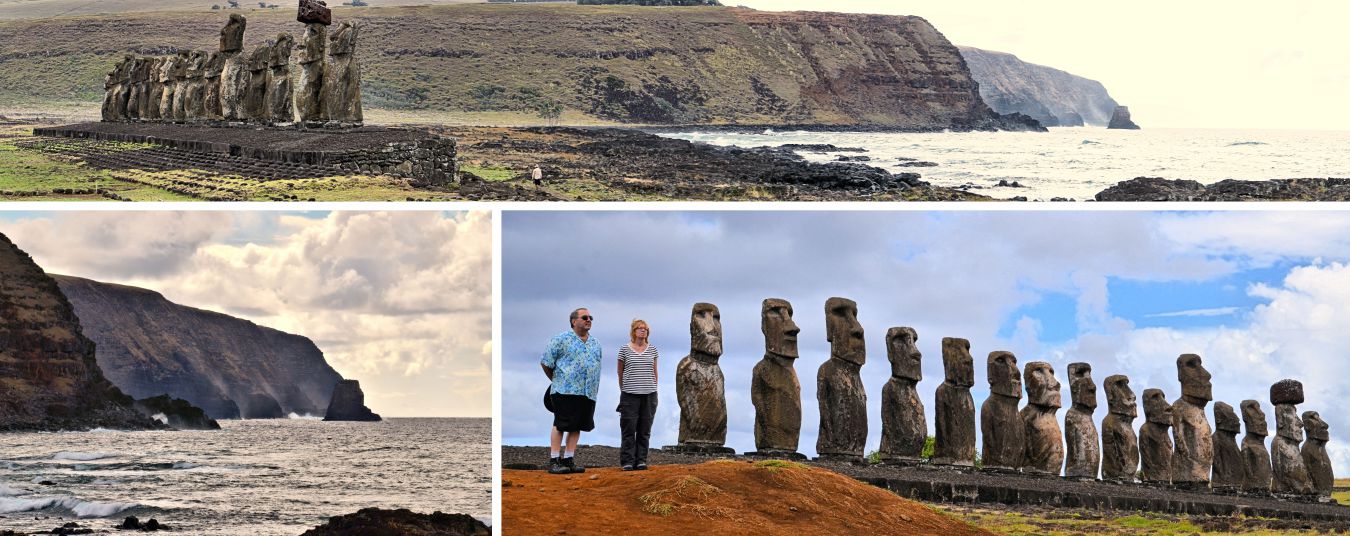Wednesday morning we have a good breakfast at the hotel before Chris picks us up at 9:30. As he drives we learn about the island. It is believed that the island was populated 600-700 AD probably from a Polynesian island (possibly one of the Marqueesas Islands). The native name for the original inhabitants and their descendants is Rapa Nui. Sitting at 27 degrees latitude, the climate is sub-tropical with lows of 14C (57F) in winter, and a high of 30C (86F) in summer. It is called Easter Island because the first contact with Europeans occurred Easter Sunday, 1722.
Three volcanos are on the island and many hills which are "parasites" off of the volcanos. Chris points to a hill where once a year they have races that he called Rapa Nui bobsledding. People put together two banana trunks with some cross-bracing to make sleds. Then they race the sleds down the hill. It sounds hysterical (and dangerous).
After climbing the paths around the quarry we return to the visitor center and order up tuna empanadas for a late lunch. They're great and pair well with a cold beverage. Lunch also gives us a chance to rest our legs and feet.
Given our soaked clothing we agree to postpone what would have been our last stop of the day until tomorrow. Of course within the 20 minutes that it takes to drive to our hotel the rain has stopped and the sun is beginning to pop out. Island life.










 RSS Feed
RSS Feed